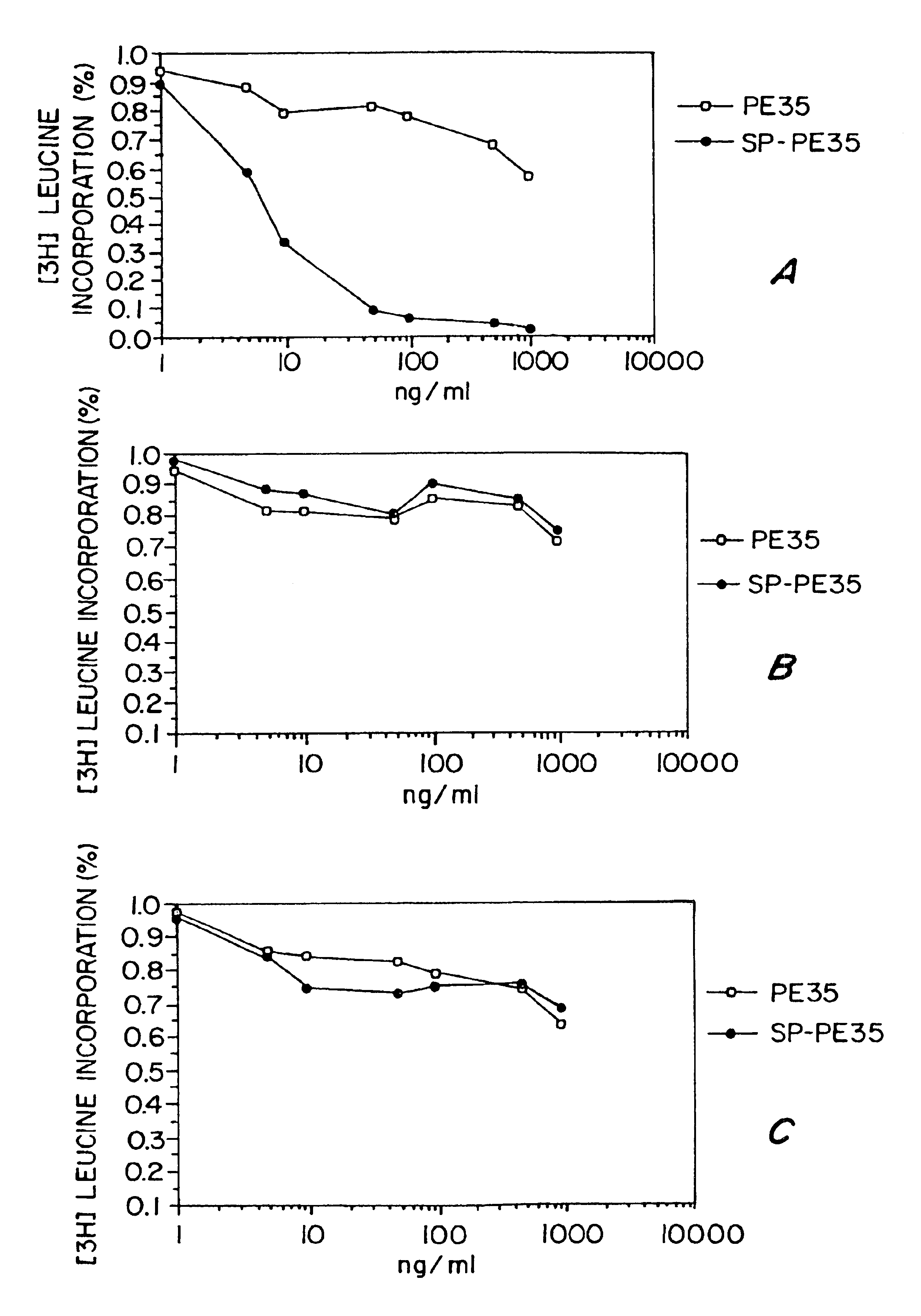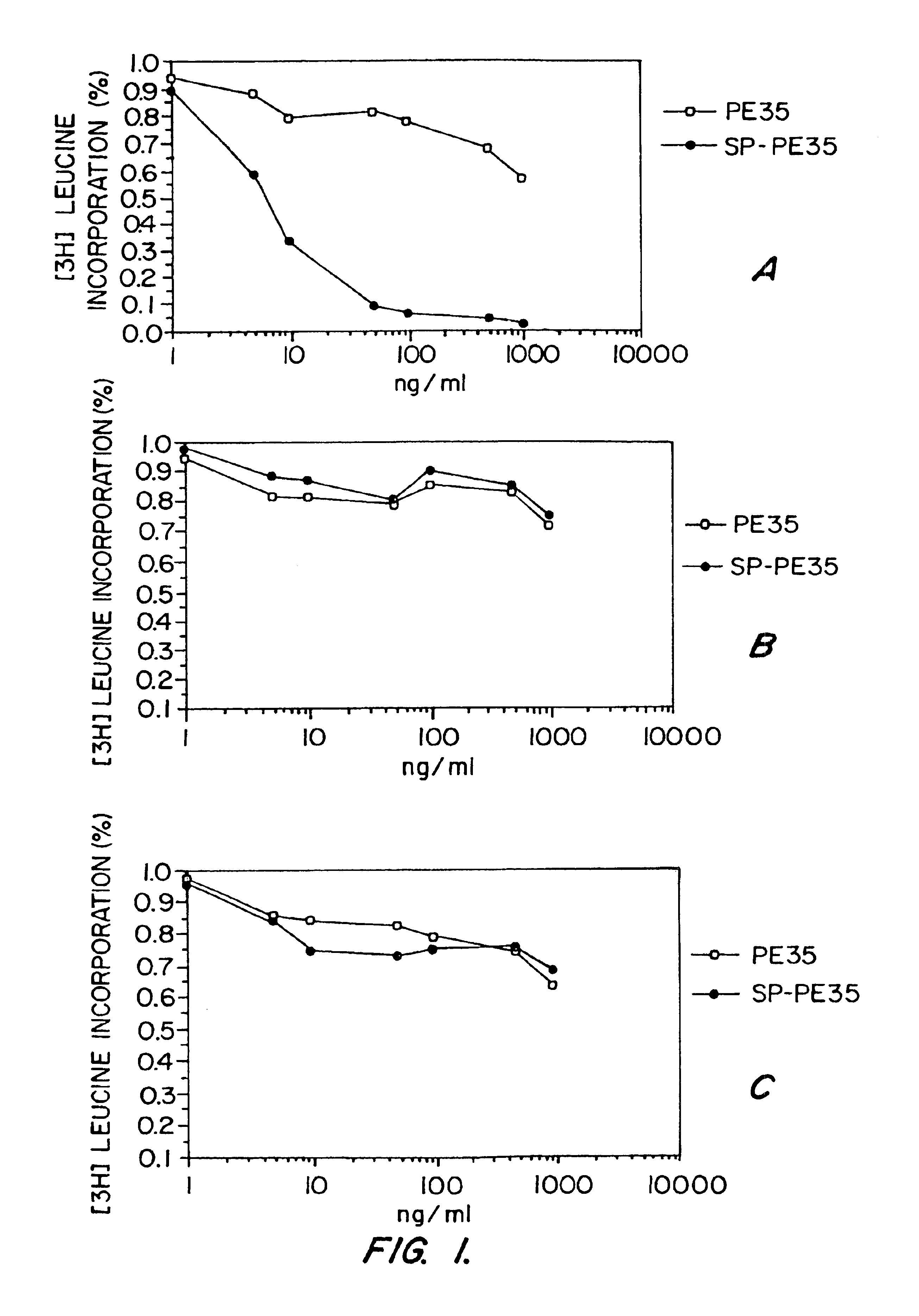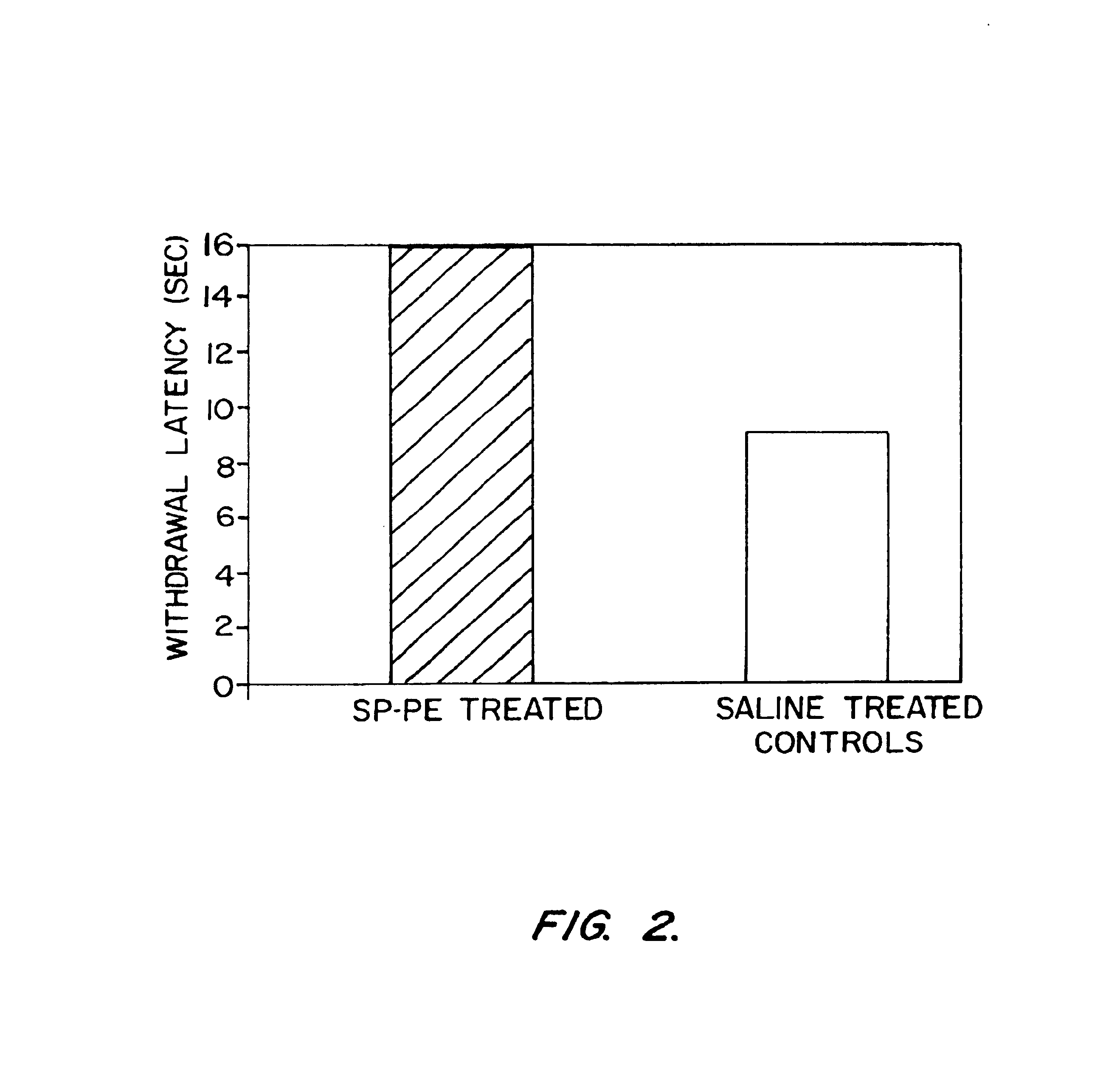Disulfide conjugated cell toxins and methods of making and using them
a technology of disulfide conjugated cells and toxins, applied in the field of disulfide, novel, can solve the problems of inability to control pain well, shorten the therapeutic range of current analgesic therapies, and have unacceptable side effects,
- Summary
- Abstract
- Description
- Claims
- Application Information
AI Technical Summary
Benefits of technology
Problems solved by technology
Method used
Image
Examples
example 1
Substance P-Pseudomonas Exotoxin Disulfide Linked Conjugate Selectively and Potently Kills Neurokinin-1 Receptor Expressing Cells
[0100]The followng example details a study which demonsrates that compositions and methods of the invetnion can be practiced to ablate NK-1 receptor expressing cells. Specifically, this study demonstrates that CHO cells stably transfected with and expressing NK-1 receptors, but not NK-2 or NK-3 receptors, can be killed by the SP-PE cell toxin conjugate of the invention.
[0101]A disulfide linked SP-PE cell toxin was made as described above. Specifically, an synthetic SP peptide (SEQ ID NO:4) was carboxy-terminal amidated prior to conjuation using standard techniques.
[0102]The carboxy-terminal amidated, N-terminal thio-nitrobenzoic acid derivatized SP peptide was reacted with a recombinant PE polypeptide having a N-terminal domain with a sequence as set forth in SEQ ID NO:1 and a carboxy-terminal domain (the translocation domain) with a sequence as set forth ...
example 2
SP-Pseudomonas Exotoxin Disulfide Linked Conjugate Kills NK-1-Expressing Cells in Rat Spinal Column Dorsal Horn Cells In Vivo
[0110]The following example details a study which demonstrates that compositions and methods of the invention can be practiced to ablate NK-1 receptor expressing cells in the dorsal horn of the spinal column in vivo. Specifically, this art-recognized animal model for pain therapy demonstrates that the SP-PE toxin of the invention administered in vivo via intrathecal injection selectively and potently killed dorsal horn NK-1 receptor expressing cells. The toxin conjugate of the invention was extremely effective deleting NK-1 receptor expressing cells from the dorsal horn of the spinal cord and NK-1 receptor expressing cells from the striatum.
[0111]Male Sprague-Dawley rats were used in all experiments. All procedures and experimental protocols were approved by an NIH Animal Care and Use Committee and are in accordance with the guidelines of the International Ass...
example 3
SP-Pseudomonas Exotoxin Disulfide Linked Conjugate Administered In Vivo Decreased Pain Sensation in a Heat Hyperalgesia Test
[0114]The following example details a study with an art-recognized animal (rat) model for investigating treatments for pain which shows that the SP-PE compositions of the invention can be used and methods of the invention can be practiced to treat pain.
[0115]All animal procedures and intrathecal toxin administrations were as described above (Example 2), as in Benoliel (1999) supra. The SP-PE toxin used was prepared as described in Example 1, above. Heat sensitivity was assayed with a withdrawal latency test as described by Iadarola (1988) Brain Res. 455:205-212, see also Benoliel (1999) supra. Sensitivity to nociceptive thermal stimulation was tested in unrestrained rats with a radiant heat stimulus as described. Briefly, the rat is placed on an elevated glass plate, with a clear plastic cage inverted over the animal. After 5 min habituation to the enclosure, a...
PUM
| Property | Measurement | Unit |
|---|---|---|
| Bond | aaaaa | aaaaa |
Abstract
Description
Claims
Application Information
 Login to View More
Login to View More - R&D
- Intellectual Property
- Life Sciences
- Materials
- Tech Scout
- Unparalleled Data Quality
- Higher Quality Content
- 60% Fewer Hallucinations
Browse by: Latest US Patents, China's latest patents, Technical Efficacy Thesaurus, Application Domain, Technology Topic, Popular Technical Reports.
© 2025 PatSnap. All rights reserved.Legal|Privacy policy|Modern Slavery Act Transparency Statement|Sitemap|About US| Contact US: help@patsnap.com



